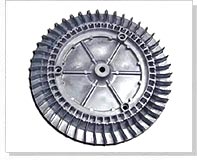 Wrought aluminum is obtained after the metal is subjected to mechanical working by processes including rolling, extrusion and forging.
Wrought aluminum is obtained after the metal is subjected to mechanical working by processes including rolling, extrusion and forging.
Wrought aluminum can be identified with a four digit number, where the first digit is the indicator of the alloying elements, followed by a dash, and then a letter identifying the type of heat treatment and a 1 to 4 digit number for identifying the specific temper. e.g. 6061-T6.
Different suffixes have the following meaning:- T - indicating a heat-treatable alloy
- H - indicating a non-heat-treatable alloy with final properties acquired by mechanical working including cold rolling
- O - indicating not heat treated or annealed material
- 1000 series: It is essentially pure aluminium with 99% aluminum content by weight and can be hardened by certain processes.
- 2000 series: It is alloyed with copper, and can be hardened to a level of strength comparable to steel. Earlier this series was referred to as Duralumin, once the most common aerospace alloy, but are increasingly being replaced by 7000 series in new designs.
- 3000 series: It is alloyed with manganese, and can be work hardened.
- 4000 series: It is alloyed with silicon. Popularly known as Silumin.
- 5000 series: It is alloyed with magnesium, and get most of the strength from solution hardening, and can also be work hardened to strength comparable to that of steel.
- 6000 series: It is alloyed with magnesium and silicon, can be easily machined, and can be precipitation hardened, but not to as high strengths, as that of 2000, 5000 and 7000 series.
- 7000 series: It is alloyed with zinc, and can be precipitation hardened to the highest strengths of any aluminum alloy.
- 8000 series: It is a miscellaneous category.
